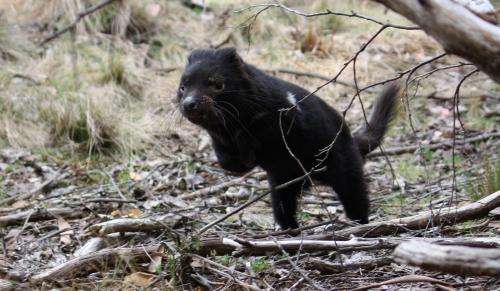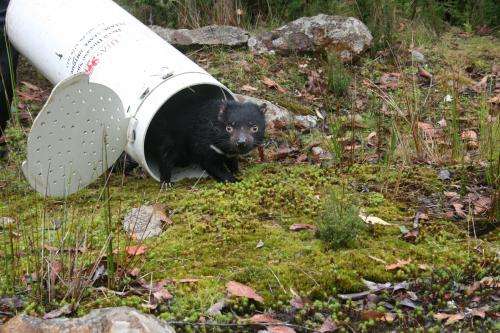Infected Tasmanian devils reveal how cancer cells evolve in response to humans

Tasmanian Devil Facial Tumour Disease (DFTD) has ravaged the world's largest carnivorous marsupial since it emerged in 1996, resulting in a population decline of over 90%. Conservation work to defeat the disease has including removing infected individuals from the population and new research in Evolutionary Applications explains how this gives us a unique opportunity to understand how human selection alters the evolution of cancerous cells.
DFTD is an asexually reproducing clonal cell line, which during the last 16 years has been exposed to negative effects as infected devils, approximately 33% of the population, have been removed from one site, the Forestier Peninsula, in Tasmania between 2006 and 2010.
However, this parasitical disease has been able survive and counteract the effect of deleterious mutation, genomic instability as well as being able to infect more than 100,000 devils.
"In this study, we focus on the evolutionary response of DFTD to a disease suppression trial," said Beata Ujvari, from the, The University of Sydney. "Tumours collected from devils subjected to the removal programme showed accelerated temporal evolution of tetraploidy compared with tumours from other populations where no increase of tetraploid tumours were observed."
The disease eradication trial provides a unique opportunity to discover the long-term effects of human selection on DFTD evolution and to explore this, the team collected tumour tissue samples between 2006 and 2011 at 11 sites within the DFTD affected areas of Tasmania.

"Our study clearly demonstrates that DFTD tumours are able to rapidly respond to increased selection and adapt to a selective regime," said Ujvari. "The results suggest that ploidization may offer yet another pathway to which DFTD is able to adapt to the ever-changing evolutionary landscape sculptured by the devils' immune system. Our study is the first to show that anthropogenic selection may enhance cancer evolution in the wild, and it therefore cautions about what measures we employ to try to halt the spread of this devastating disease."
More information: Beata Ujvari, Anne-Maree Pearse, Kate Swift, Pamela Hodson, Bobby Hua, Stephen Pyecroft, Robyn Taylor, Rodrigo Hamede, Menna Jones, Katherine Belov, Thomas Madsen, Anthropogenic selection enhances cancer evolution in Tasmanian devil tumours, Evolutionary Applications, DOI: 10.1111/eva.12117
Provided by Wiley





















